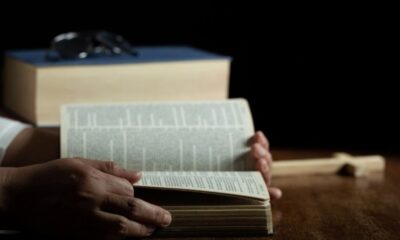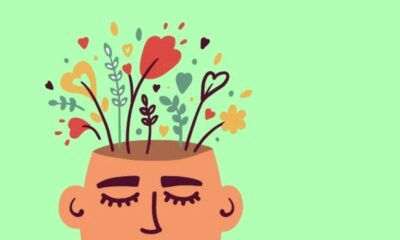HEALTH
How to protect your health and finances when going on surgery abroad

In recent years, medical tourism has experienced a surge in popularity as people increasingly seek medical procedures abroad. Whether it’s cosmetic surgery in Turkey, bariatric surgery in Eastern Europe, or dental work in other parts of the continent, the prospect of high-quality healthcare at lower costs is enticing. However, traveling abroad for medical treatment brings unique risks, and without proper protection, patients may face significant financial and medical challenges.
This is where medical travel insurance comes into play. Tailored specifically for those seeking healthcare services outside their home country, it provides essential coverage that standard travel insurance policies do not. If you’re planning a medical procedure abroad, understanding the role of medical travel insurance is crucial for ensuring peace of mind, both medically and financially.
The Role of Medical Travel Insurance
Medical travel insurance goes beyond the scope of traditional travel insurance, which typically covers flight delays, lost luggage, and medical emergencies. It specifically addresses the risks associated with medical procedures and their potential complications. Traveling abroad for surgery, whether cosmetic or otherwise, introduces a variety of potential pitfalls. From complications during recovery to unforeseen additional treatments, the financial costs can spiral quickly without adequate coverage.
By securing medical travel insurance, patients protect themselves from potential risks that might arise during the course of their procedure, such as unexpected medical complications or an extended hospital stay. Moreover, policies often cover emergency medical evacuation—should your condition require it, you could be flown back home or to a nearby country where adequate medical care is available.
Clinic Hunter, a trusted provider of medical travel insurance, understands the complex needs of patients seeking treatment abroad. Their policies offer comprehensive coverage, including surgical complications, post-operative care, and a variety of other scenarios that can arise during the medical travel experience.
Why Standard Travel Insurance Isn’t Enough
While standard travel insurance is designed to protect vacationers from common travel mishaps like illness, injury, or trip cancellations, it is typically insufficient for those traveling abroad with the intent of undergoing a medical procedure. Standard policies often exclude planned surgeries or treatments, and may not cover medical complications arising from a scheduled operation. Moreover, they are unlikely to include coverage for necessary follow-up treatments, rehabilitation, or specialized care.
This gap in coverage is precisely why medical travel insurance is necessary. It specifically addresses the medical and logistical complexities involved in seeking treatment abroad. Whether it’s coverage for post-operative recovery, complications from cosmetic surgery, or the need for emergency evacuation, medical travel insurance ensures that patients are protected from the high costs associated with unforeseen medical issues.
Essential Features of Medical Travel Insurance
When considering medical travel insurance, there are several important factors to look for to ensure comprehensive protection.
First and foremost, coverage for medical complications is a must. Even in the best healthcare facilities, unexpected complications can occur. Having insurance that covers both the immediate treatment of the complication and any necessary extended hospital stays is crucial.
Second, post-surgery recovery and follow-up care should be included in your policy. Many procedures, such as cosmetic or bariatric surgeries, require ongoing monitoring and care to ensure proper recovery. Medical travel insurance should account for this aspect of your journey and cover any necessary follow-up appointments or treatments.
Emergency medical repatriation is another vital component. In the rare case that you require specialized care that is not available in the country where you are receiving treatment, medical travel insurance will arrange and cover the cost of repatriation to another location with appropriate medical facilities. This can mean a transfer to a nearby country or, in some cases, back to your home country for further care.
Lastly, coverage for travel companions is an important feature to consider. Many people choose to bring a loved one or caregiver with them during their medical journey. Medical travel insurance policies often include provisions for the accommodation and transportation of a companion, ensuring they are covered in the event of an extended stay or emergency evacuation.
Medical Tourism in Europe and Turkey
Europe and Turkey have become prime destinations for medical tourism, offering world-class medical facilities and highly qualified doctors at more affordable prices. Countries like Hungary, Poland, and the Czech Republic are known for their expertise in dental work and cosmetic surgeries, while Turkey has emerged as a leader in hair transplants, bariatric surgeries, and various cosmetic procedures.
However, even though the quality of care in these countries is typically high, it is important to recognize the inherent risks of any surgical procedure. Medical travel insurance can provide a safety net, ensuring that if something does go wrong, you won’t face a financial burden on top of the medical stress. Whether you’re seeking a routine cosmetic surgery or a more complex medical procedure, Clinic Hunter offers specialized insurance policies tailored to the needs of medical travelers, providing the comprehensive coverage needed to navigate potential risks.
Why Choose Clinic Hunter?
When considering medical travel insurance, choosing a reputable provider is essential. Clinic Hunter stands out for its deep understanding of the medical tourism industry and the unique risks patients face when undergoing treatment abroad. By partnering with top-tier medical facilities and offering comprehensive insurance coverage, Clinic Hunter ensures that every aspect of your medical journey is protected.
With a range of coverage options that include pre- and post-operative care, coverage for medical complications, and provisions for travel companions, Clinic Hunter is an excellent choice for anyone looking to travel abroad for medical treatment. Their insurance plans are designed to provide peace of mind and financial security, allowing patients to focus on their recovery without the added worry of unexpected expenses.
Final Thoughts
Medical tourism offers a unique opportunity to access high-quality care at a fraction of the cost of domestic treatments. However, it is not without its risks. Securing medical travel insurance is a crucial step in ensuring that your health and finances are protected throughout your medical journey abroad. From covering complications and post-operative care to emergency medical evacuation, medical travel insurance provides comprehensive protection for patients seeking medical treatment outside their home country.
Choosing a reliable provider like Clinic Hunter can make all the difference. With their expertise in the medical tourism industry and comprehensive insurance policies, Clinic Hunter ensures that patients are fully covered and protected, no matter where their medical journey takes them. By investing in medical travel insurance, you’re not only safeguarding your financial future but also ensuring a safer, more secure medical experience abroad.
HEALTH
When the Kids Live Far Away and the Worry Runs Deep

Living miles away from aging parents creates a type of worry that is hard to explain. You might call often, send groceries, or book flights when you can, yet still feel that heavy sense of falling short. Late at night, you may wonder if your mom remembered her medication or whether your dad made it safely out of the shower. This feeling is more common than most people talk about and it carries real emotional weight.
Life naturally pulls us in different directions. Jobs, families, and opportunities lead us to plant roots in new cities or even different states. That does not mean your concern fades. It just means your care might need a helping hand. This is where in home caregivers in Illinois at Ace Home Care become part of the solution, bringing compassionate support when you cannot be there in person.
Long-Distance Caregiving Is an Emotional Balancing Act
Even if you are doing your best from afar, there may be times when it feels like too little. Visits reveal changes that catch you off guard, or neighbors mention concerns you had not heard. The guilt grows heavier when you think about the small moments your parent may be missing out on—warm meals, safe routines, or simple companionship. These emotions are valid and worth acknowledging.
What many families discover is that accepting support is not the same as stepping back. It is actually a form of protection—for your loved one and for yourself. Partnering with a care team you trust brings peace of mind and allows your parent to receive hands-on help while you remain their emotional constant.
Support That Adapts to Your Family’s Needs
Home care does not have to start as a major commitment. Many families begin with just a few hours each week to handle light chores, check in on routines, and provide friendly interaction. These moments help build trust and consistency for your parent, especially if they have been doing everything alone for a long time. It is not about replacing your presence—it is about expanding your reach.
Families in Illinois often turn to Ace Home Health Services for their reputation in compassionate and flexible care. Whether your loved one needs help with meals, errands, or a reassuring voice throughout the week, the care plans are customized to meet real daily needs. The caregivers are not just trained professionals—they are thoughtful companions who treat your family with care and dignity.
When Your Parent Says “I’m Fine” but You Know Something Has Changed
It is hard to hear a parent say they are okay when your instincts tell you something is off. They may downplay the laundry piling up or skip meals without mentioning it. Pride and the desire to stay independent can lead them to brush off signs of struggle. That is where listening closely and acting gently becomes important.
Introducing support does not have to feel like a confrontation. It can be framed as a small step forward, starting with tasks that feel manageable and non-intrusive. Ace Home Care specializes in creating a welcoming environment for seniors who may feel hesitant about help. The focus is always on preserving dignity while making daily life a little easier.
Staying Involved, Even from Miles Away
You do not have to be in the same zip code to stay connected to your parent’s care. With the right care team, you will receive regular updates, check-ins, and feedback about how things are going. Technology and good communication can keep you informed and involved every step of the way.
This is where working with an experienced agency like Ace Home Care makes a real difference. Their transparency and compassion help bridge the gap between your concern and your parent’s needs. You are not stepping away from responsibility—you are sharing it with people who truly care.
Knowing When It Is Time to Ask for Help
Recognizing that your loved one needs more support can be difficult, especially when you are not there to witness it daily. These signs can help you assess when to consider home care:
- Frequent missed medications or doctor appointments
- The home appears unkempt or neglected
- You feel constant worry about their safety or routine
- They start withdrawing from social interactions or seem unusually quiet
These changes signal that extra support could be beneficial. Trusting professionals to step in is not about giving up. It is about showing up in a way that makes sense for your family’s reality.
You Are Still Their Anchor
Being far away does not change your role. You are still the person they look to for support, reassurance, and love. Choosing to bring in home caregivers simply strengthens that role by giving it structure and consistency.
With the right care partner, you will gain peace of mind knowing your parent is safe, seen, and supported. It means your time together can focus more on connection than on worry. That shift makes all the difference.
Ready for the Next Step? Let’s Talk
Long-distance caregiving can bring a mix of emotions—guilt, stress, love, and deep responsibility. You do not have to carry it alone. Ace Home Health Services is here to help you find clarity, create a plan, and support your loved one with respect and compassion.
If you have been wondering whether now is the right time to explore in-home care, we are here to listen. One conversation can lead to relief and reassurance. Let’s talk about what your family needs and how we can provide support that honors both your parent’s dignity and your peace of mind.
HEALTH
Advanced Urology Products: Enhancing Patient Care and Comfort

In the realm of healthcare, urological health is a critical aspect that demands attention and utmost care. Urological disorders can be deeply impacting, affecting not only the physiological well-being of individuals but also their psychological comfort and quality of life. It is essential to utilise advanced medical products and technologies to ensure that patients suffering from such ailments receive the best care possible.
The Importance of High-Quality Urology Products
Managing urological conditions often requires long-term treatment and the use of specialised urology products. These products are designed to support various therapeutic procedures, incontinence care, and surgery recovery processes. More than just facilitating medical interventions, high-quality urology products can significantly enhance patient comfort and support overall well-being.
The advancements in urological care have led to the development of products that cater to personalised needs, ensuring that a patient’s individual medical conditions are addressed with precision. These products range from catheters, drainage bags, and urological stents, to sophisticated monitoring systems and surgical instruments. Each innovation is aimed at improving the caregiving process and patient outcomes.
Innovative Features in Urology Products
Modern urology products come equipped with innovative features designed to minimise discomfort and prevent complications. For example, catheters now boast advanced coatings that reduce friction and the risk of infection. Moreover, the design variations ensure that patients of all ages and anatomies can find a comfortable, secure fit.
Furthermore, contemporary drainage bags are designed with anti-reflux valves that prevent urine backflow, which can be a significant cause of urinary tract infections (UTIs). These features underscore the meticulous attention to detail in product design focused on patient safety and comfort.
Impact on Patient Care
The use of these advanced products in the field of urology has revolutionised patient care. They have enabled healthcare professionals to provide more accurate diagnostics and effective treatment plans. The physical and emotional strain on patients is substantially lessened by products that offer greater mobility and autonomy, especially for those dealing with chronic conditions that impair daily functioning.
With constant innovation in urological technology, there is a continuous stream of more user-friendly, less invasive products entering the market. This advances the goal of delivering healthcare that is not just about treating conditions but improving the overall patient experience.
Choosing the Right Urology Products
When it comes to selecting the appropriate urology products, healthcare providers must consider a myriad of factors. These include the patient’s medical history, lifestyle, and the specific urological condition being treated. The objective is to match the patient with urology products that not only address their medical needs but also provide comfort and ease of use.
It is also crucial that these products meet stringent safety and quality standards. Products should be sourced from reputable manufacturers that comply with health regulations to ensure that patients are receiving the best care possible without any added risks.
Education and Support for Patients and Caregivers
Beyond the physical aspects of the products themselves, providing education and support to patients and their caregivers is paramount. Understanding how to use urology products correctly can prevent complications and enhance the effectiveness of treatments. Healthcare professionals play a vital role in offering guidance and resources to ensure that urology products are being used to their full potential.
Future of Urological Health Products
The future of urological health products is promising, with ongoing research and development paving the way for increasingly innovative solutions. Novel materials and technologies are being explored to further improve the functionality and comfort of urology products. Additionally, the integration of smart technology and data analytics holds the potential to revolutionise urological care, offering new insights into patient health and personalised treatment approaches.
In this evolving landscape, staying abreast of the latest developments is vital for healthcare providers. By leveraging these advancements, they can continue to enhance patient care and outcomes in the field of urology.
Conclusion
Urological health is a complex and sensitive area that necessitates the use of advanced urology products. With the right products, patient care in the realm of urology can reach new heights of effectiveness and comfort. As the field continues to grow and evolve, the focus on innovative product development will remain crucial in the pursuit of providing exemplary care to patients with urological conditions. Healthcare providers, patients, and caregivers alike must embrace these advancements and understand their pivotal role in improving urological healthcare.
Whether it’s through the adoption of new technologies or the provision of comprehensive education and support for product use, the goal is clear: to offer a standard of care that is truly patient-centred. The future holds great promise for the field of urology, and through collaborative efforts among researchers, medical providers, and industry players, patient care will continue to advance, ensuring better health and quality of life for those affected by urological conditions.
HEALTH
Advancements in Dental Composites: Elevating Restorative Dentistry

The field of restorative dentistry has witnessed remarkable progress over the decades, particularly in the area of dental restoration materials. Among the various materials available to dental professionals, dental composites have risen in prominence due to their aesthetic appeal and improved functional properties. This article delves into the evolution of dental composites and how current advancements are reshaping restorative dentistry.
The Evolution of Dental Composites
Dental composites were introduced in the 1960s as an alternative to amalgam fillings and have since undergone significant development. Early composites faced issues such as wear resistance and limited longevity; however, advancements in technology have led to the formulation of composites that rival the durability and appearance of natural teeth.
Innovations in Composite Chemistry
Modern dental composites comprise a matrix of resin filled with a blend of glass or ceramic particles, which has been engineered to enhance their physical properties. Innovations in composite chemistry have focused on improving the material’s mechanical strength, reducing shrinkage during curing, and enhancing polishability and colour stability.
Improved Aesthetic Outcomes
Patients now demand restorations that not only function properly but also look indistinguishable from natural teeth. To meet these aesthetic requirements, dental composites have incorporated a variety of shades and translucencies. By mimicking the layered structure of natural teeth, contemporary composites offer highly aesthetic results that blend seamlessly with the surrounding dentition.
Enhanced Physical Properties
Advances in filler technology have significantly boosted the physical properties of composites. The incorporation of nano-sized fillers has resulted in materials that exhibit superior wear resistance and increased surface smoothness. These improvements have extended the longevity of composite restorations and reduced the occurrence of surface staining.
Advancements in Curing Technologies
The curing process, which hardens the composite material within the cavity, is crucial for the success of the restoration. Developments in light-curing units delivering specific wavelengths and intensities have led to composites with fewer polymerisation defects, meaning fewer post-operative sensitivities and a higher success rate.
Adhesive Systems and Bonding Techniques
The bond between the composite material and tooth structure is fundamental for the stability of the restoration. Advancements in adhesive systems and bonding techniques have enabled stronger adhesion, reducing the likelihood of microleakage, secondary caries, and restoration failure.
Minimally Invasive Approaches
The paradigm shift towards minimally invasive dentistry has been supported by the improved adhesive characteristics of dental composites. This approach preserves more of the natural tooth structure during preparation, enhancing the long-term prognosis of the tooth.
Bulk-Fill Composites
Traditional layering techniques for composite restorations are time-consuming and technique-sensitive. Bulk-fill composites, a recent innovation, have simplified the placement process by enabling the curing of thicker layers in one go, thus reducing chair time and the potential for human error during placement.
Addressing Posterior Challenges
Posterior composite restorations present unique challenges due to the high occlusal forces experienced in molar and premolar teeth. Advances in dental composites have led to the development of materials specifically designed to withstand these forces, providing a durable solution for posterior restorations.
Environmental Considerations
As environmental concerns become more prominent, the dental industry is also looking at the footprint of dental materials. Newer dental composites aim to be more ecologically compatible, focusing on reducing the production of waste and ensuring safe disposal practices.
Continuing Education and Training
The intricacies of working with advanced dental composites demand thorough training and education for dental professionals. This ensures that dentists stay abreast of the latest techniques and materials, optimising the patient outcomes of composite restorations.
The Future of Dental Composites
The future of dental composites appears promising, with research focused on further enhancing their properties. Areas such as reducing polymerisation stress, improving the self-repair capabilities of composites, and incorporating antimicrobial agents are active fields of study that aim to further elevate the capabilities of these materials.
Conclusion
The remarkable advancements in dental composites have significantly influenced restorative dentistry. They represent a union of art and science, providing natural aesthetics, enduring functionality, and supporting conservative treatment principles. As research and technology continue to evolve, dental composites are set to raise the bar even higher, ensuring optimal dental health and patient satisfaction for years to come.
-

 TECHNOLOGY1 day ago
TECHNOLOGY1 day agoTop 10 Must-Read Stories from Kristen Archives You Can’t Miss
-

 TECHNOLOGY6 months ago
TECHNOLOGY6 months agoSky Bri Net Worth Revealed: How She Built Her Financial Empire
-

 TOPIC8 months ago
TOPIC8 months agoBasement Renovation Contractors: How They Tackle Structural Issues During Renovations
-

 TOPIC2 months ago
TOPIC2 months ago5 Reasons the //Vital-Mag.Net Blog Dominates Lifestyle
-

 TOPIC4 weeks ago
TOPIC4 weeks agoTop 10 Articles from the ://Vital-Mag.net Blog That You Can’t Miss
-

 CRYPTO4 months ago
CRYPTO4 months agoCrypto30x.com Review: Is It the Right Platform for You?
-

 BUSINESS4 days ago
BUSINESS4 days agoTraceLoans Explained What You Need to Know
-

 BUSINESS2 weeks ago
BUSINESS2 weeks agoDecoding the Kennedy Funding Ripoff Report: Facts vs. Fiction
